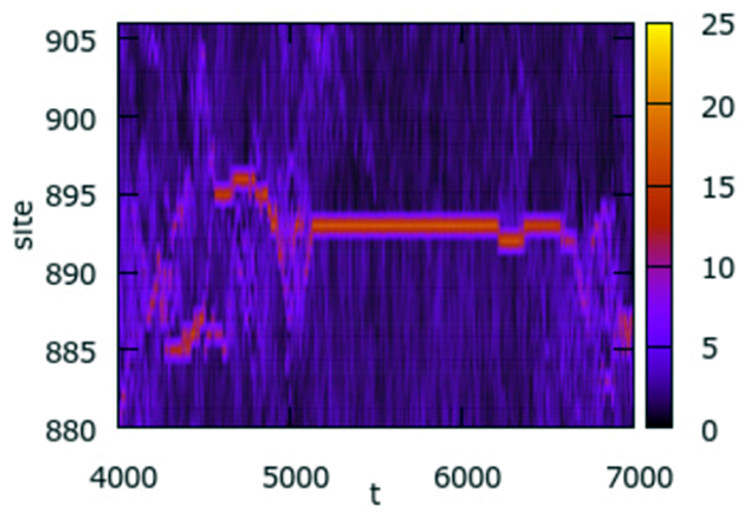주메뉴
- About IBS 연구원소개
-
Research Centers
연구단소개
- Research Outcomes
- Mathematics
- Physics
- Center for Theoretical Physics of the Universe(Particle Theory and Cosmology Group)
- Center for Theoretical Physics of the Universe(Cosmology, Gravity and Astroparticle Physics Group)
- Center for Exotic Nuclear Studies
- Center for Artificial Low Dimensional Electronic Systems
- Center for Underground Physics
- Center for Axion and Precision Physics Research
- Center for Theoretical Physics of Complex Systems
- Center for Quantum Nanoscience
- Center for Van der Waals Quantum Solids
- Chemistry
- Life Sciences
- Earth Science
- Interdisciplinary
- Institutes
- Korea Virus Research Institute
- News Center 뉴스 센터
- Career 인재초빙
- Living in Korea IBS School-UST
- IBS School 윤리경영


주메뉴
- About IBS
-
Research Centers
- Research Outcomes
- Mathematics
- Physics
- Center for Theoretical Physics of the Universe(Particle Theory and Cosmology Group)
- Center for Theoretical Physics of the Universe(Cosmology, Gravity and Astroparticle Physics Group)
- Center for Exotic Nuclear Studies
- Center for Artificial Low Dimensional Electronic Systems
- Center for Underground Physics
- Center for Axion and Precision Physics Research
- Center for Theoretical Physics of Complex Systems
- Center for Quantum Nanoscience
- Center for Van der Waals Quantum Solids
- Chemistry
- Life Sciences
- Earth Science
- Interdisciplinary
- Institutes
- Korea Virus Research Institute
- News Center
- Career
- Living in Korea
- IBS School
News Center
Breaking Laws, Making Glass- At temperatures near absolute zero, systems of atoms violate basic laws of statistical mechanics and thermodynamics. They do not exchange energy evenly, leading to a novel non-equilibrium state, coined as dynamical glass phase. - The laws that explain how your pizza gets uniformly cooked in an oven are not valid for systems of atoms at ultracold temperatures. A team of researchers at the Center for Theoretical Physics of Complex Systems, within the Institute for Basic Science (IBS, South Korea) have designed an innovative method to study how interacting particles behave at temperatures close to absolute zero, and found a situation where the laws of thermodynamics and statistical mechanics are not respected, energy is not evenly distributed, and equilibrium is not reached. Their findings are published in Physical Review Letters. Originally formulated by Gibbs, Boltzmann, and Maxwell, statistical mechanics seeks to find patterns in the chaotic behavior of a large number of particles, considered both collectively and as individual components. These are also the basic laws that describe why pizza warms up evenly in an oven, and ice-cream does not melt in a freezer. Each of these examples has to do with the distribution of energy (heat) within systems over time. Equilibrium is reached when energy is distributed uniformly. These laws, however, have limitations, like the Kolmogorov-Arnold-Moser (KAM) theorem. "The only well-known case of violation of these laws is KAM theory, but it ceases to work in systems with large numbers of interacting particles, technically known as many-body systems. The big question is whether all many-body systems obey the rules of equilibrium statistical mechanics, or not," explains Carlo Danieli, one of the authors of this study. In this study, IBS scientists observed a system that is out of equilibrium, independent from the number of particles. The method developed by the team addresses the collective dynamics of ultracold atoms in a standing wave field of counterpropagating laser beams. Such atoms form a single collective state, known as a quantum Bose-Einstein condensate. Led by Sergej Flach, the team performed an extensive statistical analysis of the dynamics of one of these systems, known as the Gross-Pitaevskii lattice. They observed a dynamical glass phase through the fluctuations in its energy distribution. Like a hypothetical pizza which does not heat up uniformly, but has cold and hot spots that change over time, the energy is not equally shared among the components of the Gross-Pitaevskii lattice. Instead it shows fluctuations that violate the laws of statistical physics and thermodynamics. "We studied these fluctuations with our computer models, and predicted that in a limited time, the fluctuations will be extremely long lasting, infinitely long lasting, and that’s when the system transforms into a dynamical glass phase," explains Danieli. "We expect that this method will pave the way to assess several other unsolved hot topics in condensed matter physics and beyond, e.g. anomalous heat conduction, interacting disordered systems, glasses, and spin glasses, among others," enthused the team. IBS researchers are now applying this method of analysis to several fundamental models in the field of complex systems. The team aspires to demonstrate and establish the existence of a dynamical glass phase in a broad class of systems related to quantum mechanics and experimental physics: from superconducting Josephson junction networks to disordered Bose-Einstein condensates in higher dimensions. As explained by Flach: "This work opens a new venue to assess phenomena related to weak ergodicity-breaking in a large number of classical and quantum many-body systems."
Carlo Danieli, Letizia Diamante, Sergej Flach Notes for editors - References - Media Contact - About the Institute for Basic Science (IBS) |
|||
Center for Theoretical Physics of the UniversePublication Repository |
|||
|
|
| Next | |
|---|---|
| before |
- Content Manager
- Public Relations Team : Suh, William Insang 042-878-8137
- Last Update 2023-11-28 14:20













